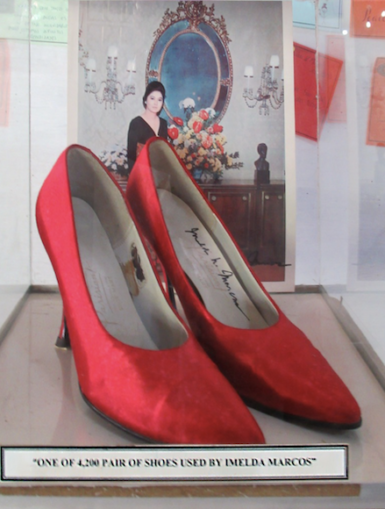
Syrian president Bashar al-Assad,
Kremlin.eu – Licence CC BY-SA 2.0
As we reach the end of the first quarter of the 21st century, the tectonic plates of global power play shift once again. Syria? Wait for it. First, the world of retail is shaken to its core by the news that your humble author has left his supermarket job. Not to worry, I’ll pick something up in the New Year, but with morning hours rather than the lining up of shampoo and dog food until 10 o’clock at night.
As if in the wake of a fleeing Syrian dictator, my spoils are already shared. The uniform, one of the new ones, was soon bagged. My hours? Gratefully snapped up by two co-workers who happen to be my wife and sister-in-law. There was no scramble for my office Christmas party ticket as I am not only banned, but they pay me not to go. I made sure I had both hands on the gift voucher before I told them I was leaving.
Incidentally, do you know what my nickname was in the big shed beside the motorway junction? As keen on tall tales of derring-do from a previous life more interesting in our little mess beside the warehouse as I am in front of an audience of Puffins – and well-equipped with larger-than-life stories that place me somewhat closer to the centre of great events than a historian might – I was known as ‘The Lion of B&M’. From the mouths of babes, suckings and shop girls. Not going to lie, rather liked it.
While we’re on the topic, I have an excellent acquaintance blessed with a photographic memory and an astonishing instant recall. Ordinarily (and rightly) exercised to benefit a waging gentleman during the machinations of the Turf, it also comes in handy at his workplace. Endless addresses and countless communications converging from complex rounds towards another big shed. There is much emptying, moving about and sorting. Sixty-four changeable bins are allocated for 2,979 postcode districts and 124 postcode areas. Easy meat for a particular type of human mind, my friend’s nickname down at the sorting office is …. ‘The Bible’.
All of which set me thinking. Given what’s happened coincidentally both at a provincial retail park and in the hills overlooking Damascus, what does history tell us of the spoils of war?On top of one of those hills sits the Assad palace, its most recent resident now de-camped to Moscow. Former mild-mannered London eye doctor cum president of Syria, Bashar al-Assad, left behind a collection of cars. In re-used exotic designer label bags, his wife abandoned lovingly arranged bits and pieces her children had brought home from school or given her as gifts.
On the other side of the world almost four decades ago, Manila’s Spanish-style Malacanang Palace was ringed by barbed wire barricades as Philippine troops faithful to President Ferdinand Marcos fired at a jeering crowd surrounding the river-side residence.
Spring 1986 witnessed a People Power Revolution in the Southeast Asian nation, a peaceful uprising against an authoritarian rule marked by corruption and repression. Sparked by election fraud and the assassination of opposition leader Ninoy Aquino, millions of Filipinos demanded change. With military defections and international pressure, Marcos fled, ending his 21-year reign and restoring democracy.
With a push from the US, the tenth president of the Philippine Republic and his close family were whisked to Clark Field, a US Air Force base in the environs of Angeles City, 45 miles the Heuy files north-west of the capital. Soon after, a crowd estimated at 20,000 swept into the grounds of the presidential palace unopposed. They rampaged through an administrative building, ripping down pictures of the former president and his ex-beauty queen wife Imelda, tipping over tables and chairs and smashing down doors.
As if a human cyclone they swept on, ransacking desks and strewing papers everywhere. In the Marcos private apartment, they uncovered evidence of the family’s lavish lifestyle, including Imelda’s collection of luxury items and jewellery. Nicknamed the Iron Butterfly, her wardrobe included 15 mink coats, 508 gowns, 888 handbags – and a bulletproof bra.
The scene symbolized the regime’s corruption and extravagance amid widespread poverty, fueling outrage and cementing the revolution’s legacy. Some of Mrs Marcos’s personal articles could be found in a dressing room next to her bedroom but the bulk of her clothing was in a basement below the family quarters. However, it wasn’t to be the bulletproof bra which captured the headlines.

The Special Battalion Museum,
David Stanley – Licence CC BY-SA 2.0
By the next day, a mood of vengeance and jubilation had passed to be replaced by relief and disbelief that FM’s rule was over. Now secured by the military to prevent further looting, it was a sightseeing day at the palace. Hundreds of people strolled in the lawns or queued outside to get in. A nun reflected to reporters, ‘We’re happy that people can come and look inside here for the first time in years. We are going to call it Freedom Park.’ But talk among the curious Manileños, spreading like a wildfire across Metro Manila and hence to a surprised world, was not of any Freedom Park or even of gowns or jewellery or a bullet-proof bra, but of other apparel discovered in Mrs Marcos’s basement.
The previous day, looters had discovered thousands of pairs of shoes. Famed for her extravagant lifestyle, Imelda’s collection numbered around 3,000 or 4,200 or 5,000 pairs – depending on who you believe. Noticably taller than her husband and with size eight and a half feet, the first lady’s collection included designer brands such as Ferragamo, Gucci, and Chanel. These shoes, alongside racks of other ostentatious possessions, became emblematic of the Marcoses’ corruption and disconnect from the poverty endured by many ordinary Filipinos.
From Clark Field the Marcoses were flown to exile in Hawaii, where Ferdinand died in September 1989. Eighteen months later, catastrophe struck back in the archipelago with the eruption of Mount Pinatubo. Besides loss of life, the eruption decimated Clark Field and contributed to the eventual withdrawal from the islands of the United States Air Force.
In response, Imelda offered to auction her famous collection to raise funds for the victims. More than 1,200 pairs of her footwear were still on display at the Malacanang Palace. Later that year, new President Mrs Corazon Aquino, widow of the murdered opposition leader Ninoy, allowed Mrs Marcos to return to the Philippines to face corruption charges. The shoes and other momentoes remained at the presidential palace until 2010. With termites, mold and humidity from the nearby Pasig River taking their toll, one hundred and fifty boxes were used to transfer the collection to the National Museum.
Nowadays 749 pairs of the shoes are kept in a shoe museum in Marikina, a subdivision to the east of Metro Manila. In early 2024, 250 pairs were on public display alongside other exhibits and artefacts from the local shoe-making industry.
The Marcoses fared better. Despite losing the shoes, the Marcos family retained their political heartland in Ilocos Norte with Imelda becoming a three-time elected Senator in the House of Representatives. Now aged 95, her son Ferdinand ‘Bongbong’ Marcos Jr followed in his father’s footsteps after a May 2022 presidential election victory.
An inspiration to those of us deposed from hilltop Syrian Palaces, or bargain retail sheds.
© Always Worth Saying 2024


